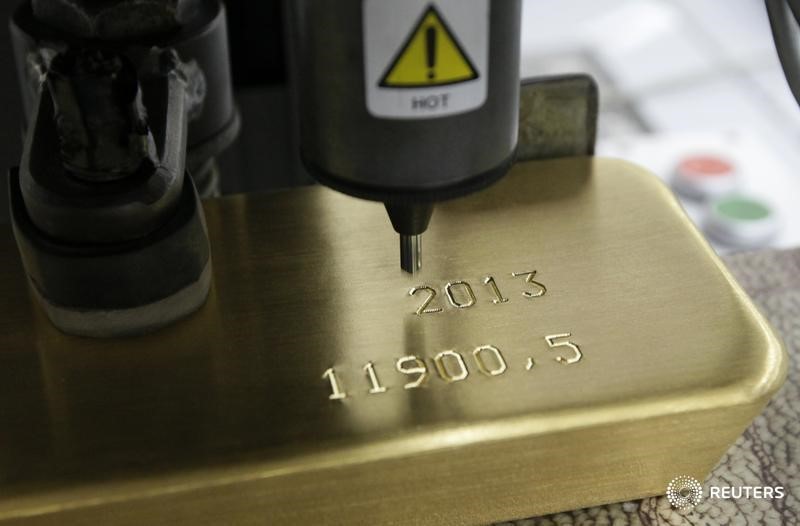By Geoffrey Smith
Investing.com -- Gold prices hit a seven-year high on Wednesday as expectations of further monetary policy easing to cushion the economic impact of the Covid-19 outbreak.
Precious metals had to battle with a split-personality market, as demand for the ultimate haven asset was accompanied by a rebound in risk assets such as equities and oil. Bond yields, which normally fall when gold rises, rose by one to two basis points along the Treasury curve.
“The markets appear to be both ignoring the long-term negative economic impacts of China's shutdown while at the same time hedging the risk by bidding gold higher,” BK Assetmanagement’s Boris Schlossberg said.
Gold futures received a decisive push up from Citigroup (NYSE:C), whose commodity analysts, led by Ed Morse, took the view that gold should hit $2,000 an ounce within one or two years.
“Gold should perform as a convex macro asset market hedge, resilient during ongoing risk market rallies but a better hedge during selloffs and vol spikes,” CNBC quoted Morse’s team as saying. Citigroup declined to confirm the note.
By 11:30 AM ET (1630 GMT), gold futures for delivery on the Comex exchange were up 0.27% at $1,607.95 a troy ounce, having earlier risen as high as $1,614.25. That’s their highest since the Federal Reserve’s quantitative easing program was in full flow in 2013.
Silver futures rose 0.4% to $18.22, while platinum futures cracked $1,000 to trade at $1,003.65, up 1.0%. Platinum was again dragged higher by sister metal palladium, which rose another 3.7% to another new record.
Risk assets were supported by reports that China is preparing more stimulus measures to support sectors such as airlines that have been particularly hard hit by the virus. Bloomberg later reported that Beijing intends to take over HNA Group, a highly indebted conglomerate that grew out of a regional airline business.
But given that China is already struggling with a huge corporate debt problem, some took the view that bailouts were likely to be followed by loan defaults and ever-greater problems with the Chinese financial system – a development that hardly makes havens like gold less attractive.
A market convinced that the Chinese slowdown will elicit further rate cuts in developed markets chose to ignore surprising rises in inflation in both the U.S. and U.K. earlier. U.S. factory gate prices rose 0.5%, taking the annual rate of producer price inflation to 2.1%, its highest since May, while the U.K. consumer price index rose more than expected to 1.8%, still below the Bank of England’s target but an upside surprise consistent with other strong data this week that have argued against further rate cuts.
